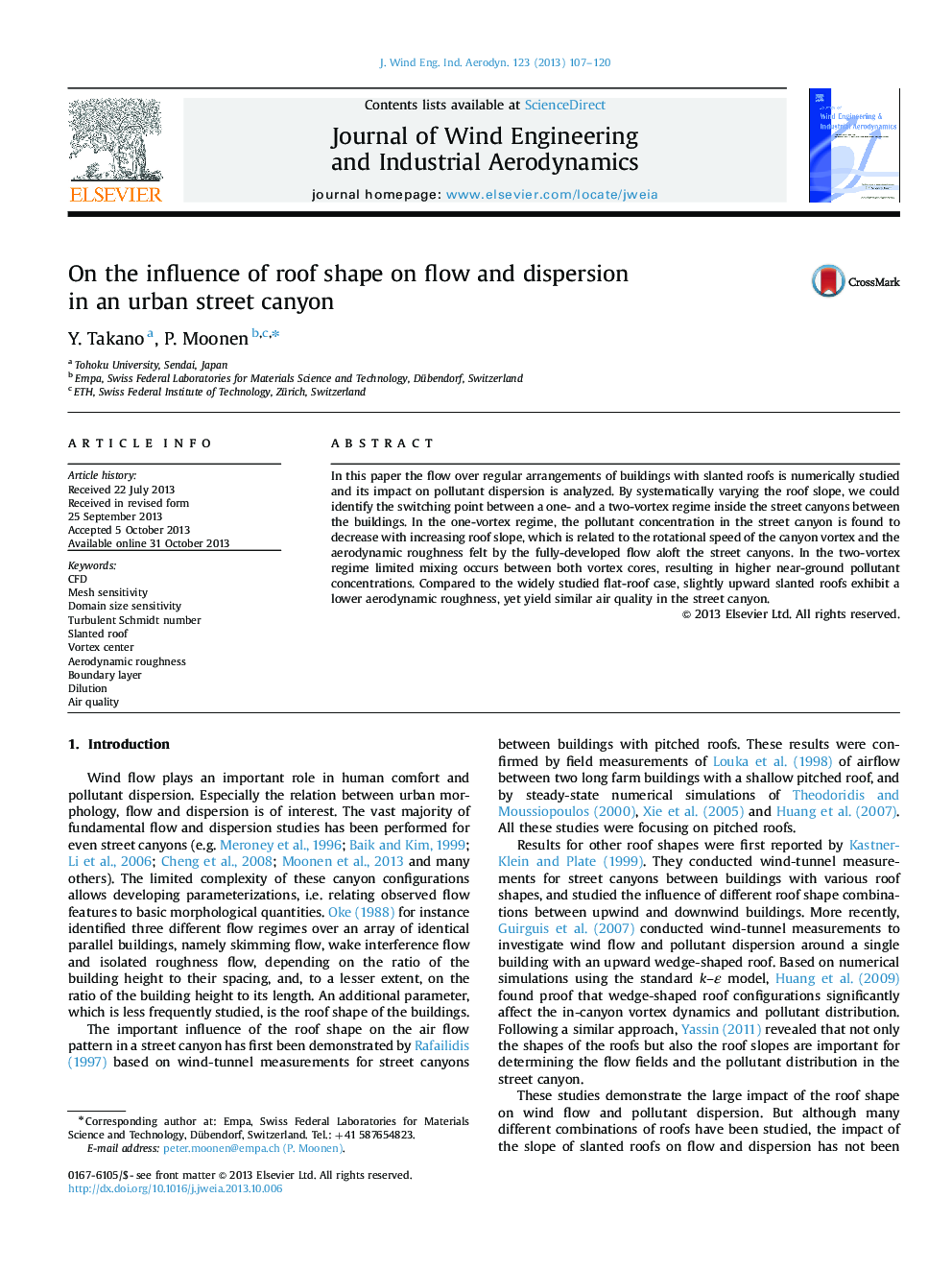| Article ID | Journal | Published Year | Pages | File Type |
|---|---|---|---|---|
| 293597 | Journal of Wind Engineering and Industrial Aerodynamics | 2013 | 14 Pages |
•Validated model to study flow and dispersion in building arrays with slanted roofs.•One- and two-vortex regimes are identified based on orientation and roof slope.•More dilution and reduced concentrations for steeper roofs in one-vortex regime.•Higher aerodynamic roughness but poorer air quality in two-vortex regime.•Flat roof has similar air quality but higher aerodynamic roughness than 2–4° roofs.
In this paper the flow over regular arrangements of buildings with slanted roofs is numerically studied and its impact on pollutant dispersion is analyzed. By systematically varying the roof slope, we could identify the switching point between a one- and a two-vortex regime inside the street canyons between the buildings. In the one-vortex regime, the pollutant concentration in the street canyon is found to decrease with increasing roof slope, which is related to the rotational speed of the canyon vortex and the aerodynamic roughness felt by the fully-developed flow aloft the street canyons. In the two-vortex regime limited mixing occurs between both vortex cores, resulting in higher near-ground pollutant concentrations. Compared to the widely studied flat-roof case, slightly upward slanted roofs exhibit a lower aerodynamic roughness, yet yield similar air quality in the street canyon.
